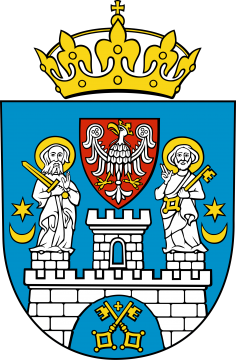
The city was too small for the army and the influx of Prussian civil servants. The medieval walls were demolished and new squares and streets laid down to allow for westward expansion. Today’s Pl. Wolności (Freedom Sq.) was built, as was Al. Marcinkowskie – Poland’s first public promenade. The partition period was interrupted by the Uprising of 1806, invoked when Napoleon arrived, and inclusion in the Duchy of Warsaw (1806-1812). The Grand Duchy of Poznań was returned to Prussia after the Congress of Vienna.
As the city was only 60 km from the Russian border, the government set about building what was then one of the most impregnable fortresses in Europe in 1828. This hindered spatial expansion.
Wielkopolska’s participation in the November Uprising (1830), and later the January Uprising (1863), led to the concept of “organic work” being developed in the region. Karol Marcinkowski, Hipolit Cegielski and Tytus Działyński were among its proponents. This activity brought about the opening of the Poznań Bazar, which focused on Polish commercial and cultural life, and the beginning of Hipolit Cegielski’s metal works.
The city expanded rapidly and a new district was created around the castle once the fortifications were dismantled at the turn of the 19th and 20th centuries. Ignacy Jan Paderewski’s arrival in Poznań on 26 December 1918 triggered the triumphant Wielkopolska Uprising.
The General National Exhibition (commonly known as “PeWuKa” from its Polish initials “PWK”) of 1929 was the most important event of the interwar years. This was held to showcase what Poland had achieved during its first 10 years of independence. The largest trade event in Polish history, it lasted 4 months and drew 4 million visitors!
The secret German Enigma code was broken in Poznań shortly before the outbreak of WWII. During the war, Poznań, along with the rest of Wielkopolska, was incorporated into the Reich as Reichsgau Wartheland. Many residents were expelled to the General Government area and the old Fort VII was made a place of execution. The city regained its freedom on 23 February 1945.
On 28 June 1956, Poznań factory workers took to the streets to fight for truth, freedom and bread.
These days, the city is mainly associated with the Poznań International Trade Fair. The United Nations Climate Change Conference was held here in 2008. Poznań is a university city where some 100,000 people study at various academic institutions every year. It is also an industrial centre (home to H. Cegielski – Poznań and the Poznań Volkswagen plant) and a sports city whose Malta Regatta Course hosts international competitions.











